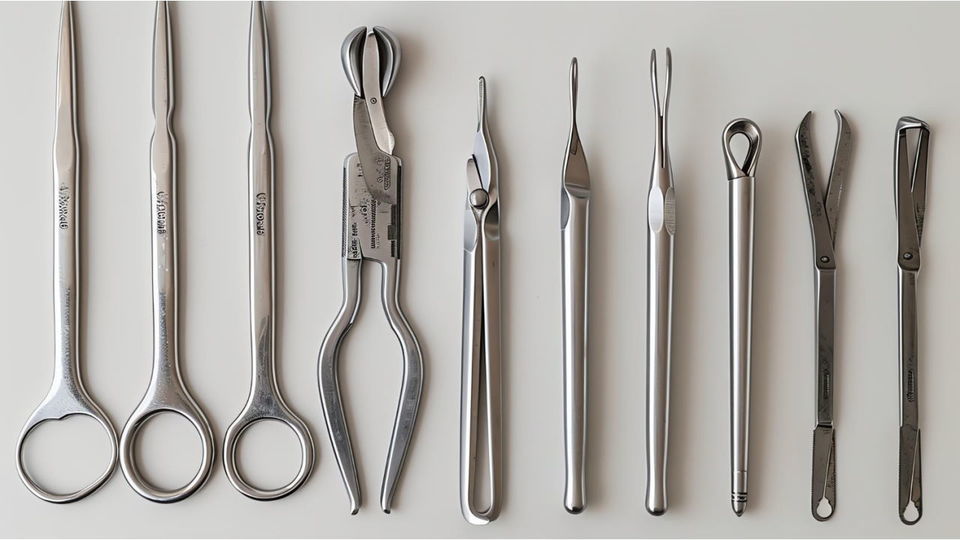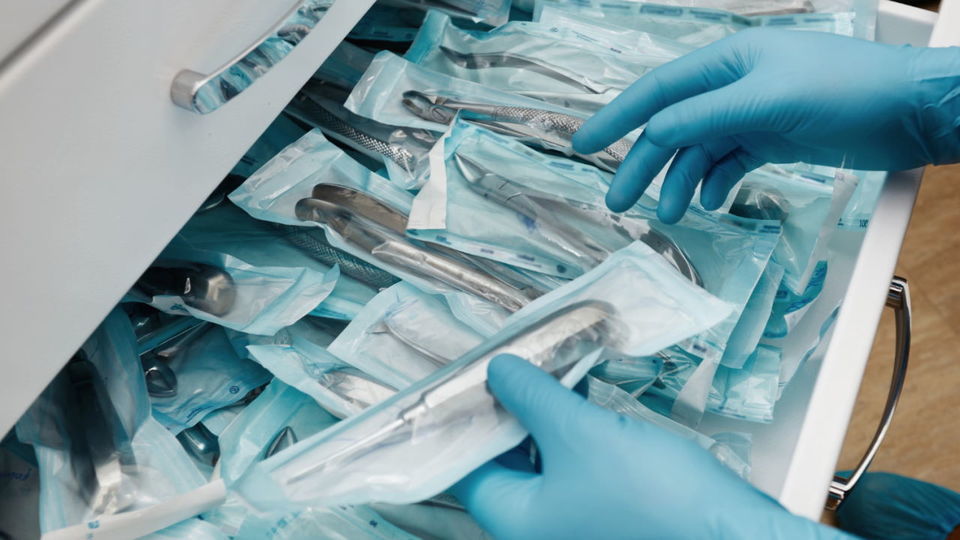Dental services require the use of carefully processed instruments to eliminate the risk of transmitting infections. All medical equipment undergoes strict preparation, including disinfection and sterilization stages to destroy hepatitis, HIV and other viruses, bacteria and fungi. How does this happen and what do dentists do to ensure maximum patient safety? Our expert, Andrey Zavalyuk, head of the Intel Medical Group, helps to understand this issue.
 20725
20725
What can you get infected in the dentist's chair?
The dentist and his assistant come into contact with a large number of different microorganisms found in the saliva and blood of patients. These include hepatitis B and C viruses, herpes viruses, cytomegalovirus, measles, mumps, chickenpox, HIV, mycobacterium tuberculosis, streptococci, staphylococci and many other infections that are not preventable by vaccination. The patient can also become infected with coronavirus, flu and acute respiratory viral infections. And all this can happen if the clinic does not follow the rules for sterilizing instruments.
What are the risks of infection transmission:
- from patient to patient (when a person comes to see a doctor who may not even be aware of their illness, for example, at the early stage of ARVI);
- from patient to medical staff (creates a high risk of infection for many patients with whom the medical staff comes into contact);
- from medical workers to the patient.
Why is instrument sterilization so important?
Sterilization allows the instruments to be reused, preventing the transmission of microorganisms from one patient to another. This makes all invasive procedures safe and also reduces the cost of services for the patient: the cost of constantly changing disposable instruments would significantly affect the cost of treatment, not to mention the fact that a number of instruments cannot be made disposable.
To prevent the spread of infections, all dental clinics use disinfection and sterilization methods. The process of disinfection and sterilization of instruments is carried out according to a pre-established algorithm. Each patient is considered a potential source of infection, and therefore the change of all instruments and the processing of used ones are strictly mandatory. That is, the doctor meets each new patient with a new set of instruments, and the nurse takes previously used ones to a special room for processing.
Such devices as impressions, saliva ejectors, blanks and metal instruments are subject to disinfection. All work surfaces, equipment panels, medical clothing and inventory used for cleaning are also processed.
How is disinfection and sterilization carried out?
According to the norms and regulations of the Ministry of Health of the Russian Federation, all instruments that come into contact with the patient's biological fluids must undergo sanitary treatment. This process includes several key stages, in accordance with the document approving the sanitary rules and regulations SanPiN 3.3686-21 “Sanitary and Epidemiological Requirements for the Prevention of Infectious Diseases” (as amended on May 25, 2022).
1. Disinfection — destruction of vegetative forms of pathogenic microorganisms by various methods. Chemicals, hot steam under pressure and other approaches can be used for this. The choice of method depends on the material from which the medical instrument is made,
Pre-sterilization treatment is aimed at removing various contaminants (protein deposits, drugs, blood) to increase the effectiveness of subsequent stages of treatment. Cleaning can be done manually or with specialized devices using detergents. Process stages:
1) rinsing instruments with running water for at least one minute,
2) soaking in a solution with a detergent for 20 minutes at a temperature of at least 50 degrees,
3) rinsing each instrument under running water for 3 to 5 minutes to completely remove the detergent,
4) rinsing in distilled water to remove residual contaminants contained in running water,
5) drying at a temperature of 85 degrees until the moisture has completely evaporated.
2. Sterilization of dental instruments — complete destruction of both vegetative and spore forms on the surface of the instruments. Sterilization can be carried out using various methods (physical or chemical) depending on the type of medical instruments.
What instruments are subject to processing
 Image: dudedsgn/Freepik
Image: dudedsgn/Freepik
Those that come into direct contact with wounds, blood or mucous membranes can be disposable, but if they are reusable, they must be sterile. Sterilization of such instruments is carried out after disinfection and pre-sterilization treatment using low-temperature modes.
Instruments used for manipulations that do not damage the mucous membrane are disinfected and sterilized using chemical methods. Low-risk medical instruments come into contact exclusively with intact skin and are subject to low-level disinfection.
Disinfection and pre-sterilization cleaning can be done manually or with the help of special machines. During manual processing, instruments are soaked and wiped with napkins, while in automatic mode, special devices are used.
How does disinfection and sterilization take place?
All dental instruments, such as burs and handpieces, are subject to disinfection, but not all of them require the same approach. All-metal instruments (such as burs), as well as plastic and glass items, can be soaked in a disinfectant solution, while handpieces are strictly prohibited from being treated in this way. Special wipes can be used to disinfect handpieces. It is important to remember that they contain aggressive substances, so the health worker must wear rubber gloves before use.
Smooth surface instruments, such as spatulas, can be cleaned using a special brush under running water. While instruments with a ribbed or similar surface, such as diamond burs, are cleaned exclusively using an ultrasonic cleaner. This is because the diameter of the bristles and the ribbed surface of such instruments usually do not match, which makes high-quality cleaning impossible.
How does an ultrasonic cleaner work? This device consists of a body in which a container is installed. The tools are placed in it, after which the container is placed in the body of the cleaner. Before starting work, a cleaning agent is poured into the device. Then the device is started, the required time is set, and the tools are automatically cleaned of dirt. After the cleaning process is complete, the instruments are removed from the sink, dried and packaged.
Sterilization devices
 Image: Wayhomestudio/Freepik
Image: Wayhomestudio/Freepik
The autoclave is the most effective method of sterilizing instruments, ensuring complete sterility and excellent processing quality. The employee places the trays with instruments on pallets inside the device, sets the required temperature and selects the appropriate program. When the processing cycle is complete, the trays must be carefully removed using a special holder to avoid burns.
Another device is a dry-heat oven, which works by using high temperatures to effectively destroy microorganisms and pathogens. Dry-heat ovens provide reliable and uniform heating, making them indispensable for maintaining sterility in various procedures. This process is carried out by uniformly heating the air inside the oven, which effectively destroys microbes, bacteria, and fungi. It is important that the temperature and time of sterilization are strictly observed, as this ensures the complete destruction of pathogens.
There is also a plasma sterilizer – a device that uses plasma to destroy microorganisms and sterilize various objects. Its operating principle is based on the effect of ionized gas on the surface, which allows it to effectively destroy bacteria, viruses and fungal spores. The process begins with the creation of plasma from a gaseous substance, usually hydrogen or hydrogen peroxide.
When heated or an electric field is applied, the gas ionizes, which leads to the formation of plasma. When plasma comes into contact with the surfaces of instruments or materials, it causes the destruction of the cellular structures of microorganisms. Due to the high energy of the particles in the plasma, oxidation and destruction of their membranes occurs, which leads to sterilization.
Packaging machines are used to pack sterile instruments. A roll of the required size, corresponding to the size of the instrument, is placed in the device, fixed, after which the device carries out the welding. The staff needs to cut the package, place the instrument in it, close it, bring it to the heating element to seal.
